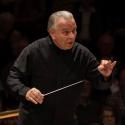The turnout in the Wigmore’s Kirckman series of young-artist showcases was unusually high for this 23-year-old Chinese pianist. With the Op. 28 Preludes of Chopin, it became clear that many of the audience had known what they were waiting for. Up to that point, Ke Ma had given the impression of another young Brahms-and-Prokofiev virtuoso. She wasn’t the first pianist of any age to grapple unequally with the Wigmore’s Steinway, which requires a super-fine touch, particularly in classical repertoire, if it isn’t to sound clangorous and overwhelming in the hall.
If nothing else, it made an effective prelude to the Second Sonata of Prokofiev, played here as Vorticist Mozart: cast in sharp lines and regular structures, with a sense of an explosive temperament barely constrained by a form deliberately one size too small for its content. In the first movement’s prodigal spread of four themes Ma entwined helter-skelter caprice and moonlit romance like a kitten with a ball of wool, and this spirit of playfulness lifted the Scherzo from hammering itself into yet another Machine-Age moto perpetuo.
Rubato came as naturally as breathing, imparting unusually flowing grace
She was still using the Steinway’s full weight after the interval in Gershwin’s Three Preludes. In doing so she made an unlikely but persuasive case for them (especially a lusciously voiced No. 2) as Brahms with swing, Gershwin gone straight. Even so, I’d think twice before hiring her to do Rhapsody in Blue.
What Ma is, however, is a Chopin pianist. That much was clear from the opening surge of the Preludes. She played the Op..28 set as a song-cycle without words. Not that words were missing – she appended Alfred Cortot’s hypertrophic summary of each Prelude to the programme, and perhaps the snow, the rockets, the curses and the funerals mean something to some listeners – but that they were superfluous. The Steinway was, all of a sudden, a different instrument: quicker to the touch, louder, softer, submissive to her will. Rubato – that elusive art of stretching a melody over a bar – varies from composer to composer and artist to artist. On this occasion it came as naturally as breathing, imparting unusually flowing grace to the more famous, slower numbers. The golden-section climax of the set is the "Raindrop", No. 15, and this had a baleful, Schubertian sense of destiny about it; others were impish or torrential, all cast in a longer story. Pianists go on a lifetime’s search for the heart of this music, but Ke Ma is already closer than many, and quicker than most.













Add comment